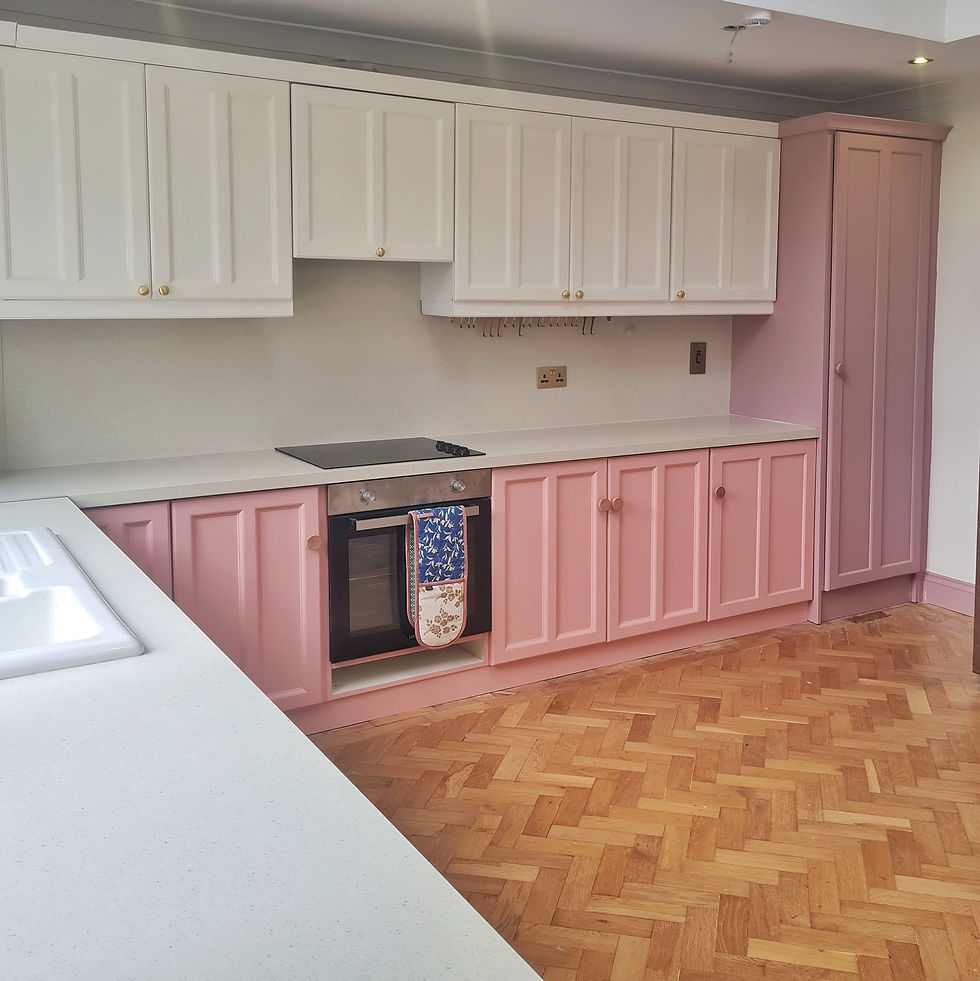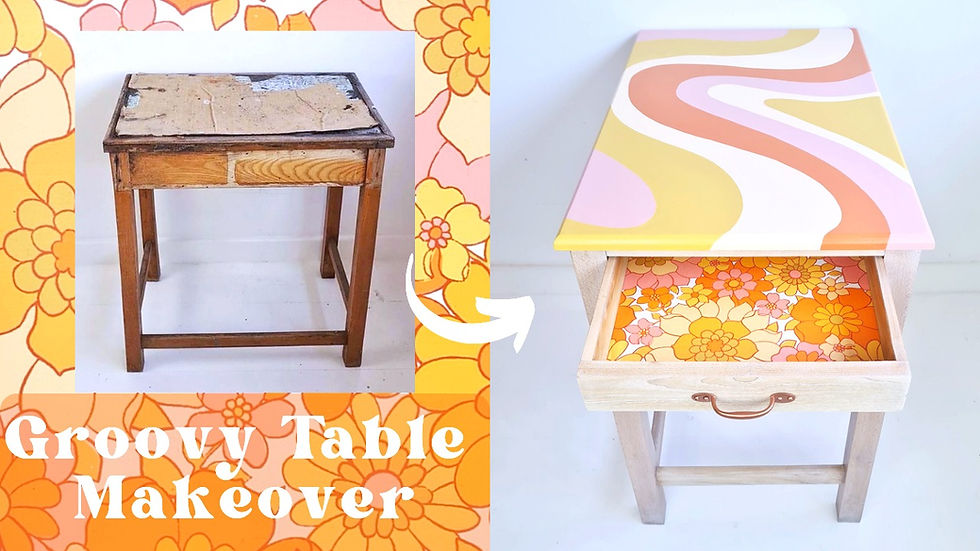Primers..the Good the Bad the Ugly
- Sarah Murphy-Colourfulsaz

- May 18, 2022
- 4 min read
Hi friend, I know the title might make you think, what could she possibly have to say about primers? Well let me tell you, I have a LOT to say. But maybe that’s just my personality aye? Anyways let's get into this riveting topic.

Read the Bloody Manual
When It comes to choosing the correct primer, you should always read the can or the datasheet which you can find by googling the product name and technical datasheet. The datasheets are full of technical information I don’t understand. If I want to know if the product is suitable for PVC or melamine furniture I just search terms within the document. This will also let you know the drying and redcoat times which should also be followed for the most durable finish. Preparation and primers are key for the end result and ensuring furniture lasts the test of time.
Applying Primer
When it comes to applying your primer you have to be careful to ensure it's completely smooth for a flawless finish. I apply primer with a semi-smooth or smooth Two Fussy Blokes roller. Make sure to rinse and spin before you begin painting- i.e. wet the roller then spin it quickly against a wall and remove any stray fibres that are sticking out. This will create a spray-like finish before applying your topcoat.
Tannins and Knots
When painting furniture, you have to consider the type of wood. So for woods like teak, they release tannins which cause discolouration on the surface if you use a non-stain-blocking primer. You’ll notice the primer will become discoloured no matter how many coats you give it. This is because it needs a stain-blocking primer to seal in those tannins and ensure they don’t come through the paint. Sometimes you won’t even get bleeding until the piece is completely done and you’re applying varnish, so save yourself the heartbreak and use the right primer the first time around. The same goes for knots, they may not become visible through the primer at first but the knots will eventually start showing through the primer if a stain blocker is not used. Most stain blockers that work on tannins and knots are oil-based, I like Zinsser BIN.
I’ve also recently discovered Dixie Belle BOSS which is a water-based stain blocker. When I say this is probably going to change my life, I mean it. I HATE the oil-based paints with a passion, you have to throw away any rollers or paintbrushes if like me you’re incapable of cleaning them with white spirits. Also, it comes in clear which is phenomenal for sealing masking tape designs and ensuring no bleeding when you apply your satin paint. This primer blocks tannins and knots. I have only used it on one project so far so I will keep you posted, but so far I LOVE it. I picked this up in the Paint Room, an Irish paint shop (not an ad). Another one to consider is Crown Trades PX4 all-purpose primer. I've not tried it yet but it's a water-based stain-blocking primer.
Choosing the type of Primer
If like me you don't know what type of wood you're painting a lot of the time, you can either do a patch test or play it safe and use a stain-blocking primer in the first place. Most mid-century furniture needs stain-blocking primers. Sometimes deep coloured furniture needs it also, but other times this is just the varnish or stain and not the wood itself so you may get away with a normal primer. It really is trial and error though.
Ikea Furniture
A lot of people either don’t know or are afraid to paint Ikea furniture. I do understand why you'd be deterred if you’ve tried to paint something with a shiny surface in the past without the correct primer. That ain’t gonna work. But it’s actually super easy. You just need to do the same preparation as you would for any other furniture, check out my full blog post on prep, and use the correct primer. The primer should be suitable for melamine furniture, as this is a plastic-type coating covering the wood you will need special adhesion primer. Zinsser has primers suitable for this and I also like Otex Akva from Tikkurila. But most brands will have a water-based primer suitable for Ikea furniture just make sure to read the label or technical datasheet online.
When you can Skip the Primer
A lot of people love the idea of skipping two of the preparation steps- sanding and priming. I get it, anything to make the job quicker is always good. But any satin, eggshell or gloss paints will usually require a primer in order to ensure it sticks to the wood. Some brands have built-in primers such as chalk paints like Annie Sloan or mineral paints like Fusion. I really like working with Fusion and I’ve used Harmony Paints chalk paint which was also really good for blending. Beyond Paint boasts no primer AND no sanding. I know a lot of people will be intrigued by that one. I’ve not tried Beyond or Chalk Paint as I’m used to priming now but definitely something to take into consideration if you don’t have much patience.
Hope this helped illuminate the world of primers for you. If you're still struggling with choosing a primer patch tests are your friend. If you have any questions just give me a shout!
All opinions are my own. I was previously gifted products from Two Fussy Blokes, Harmony Paints and Crown. This is not an ad.









Comments